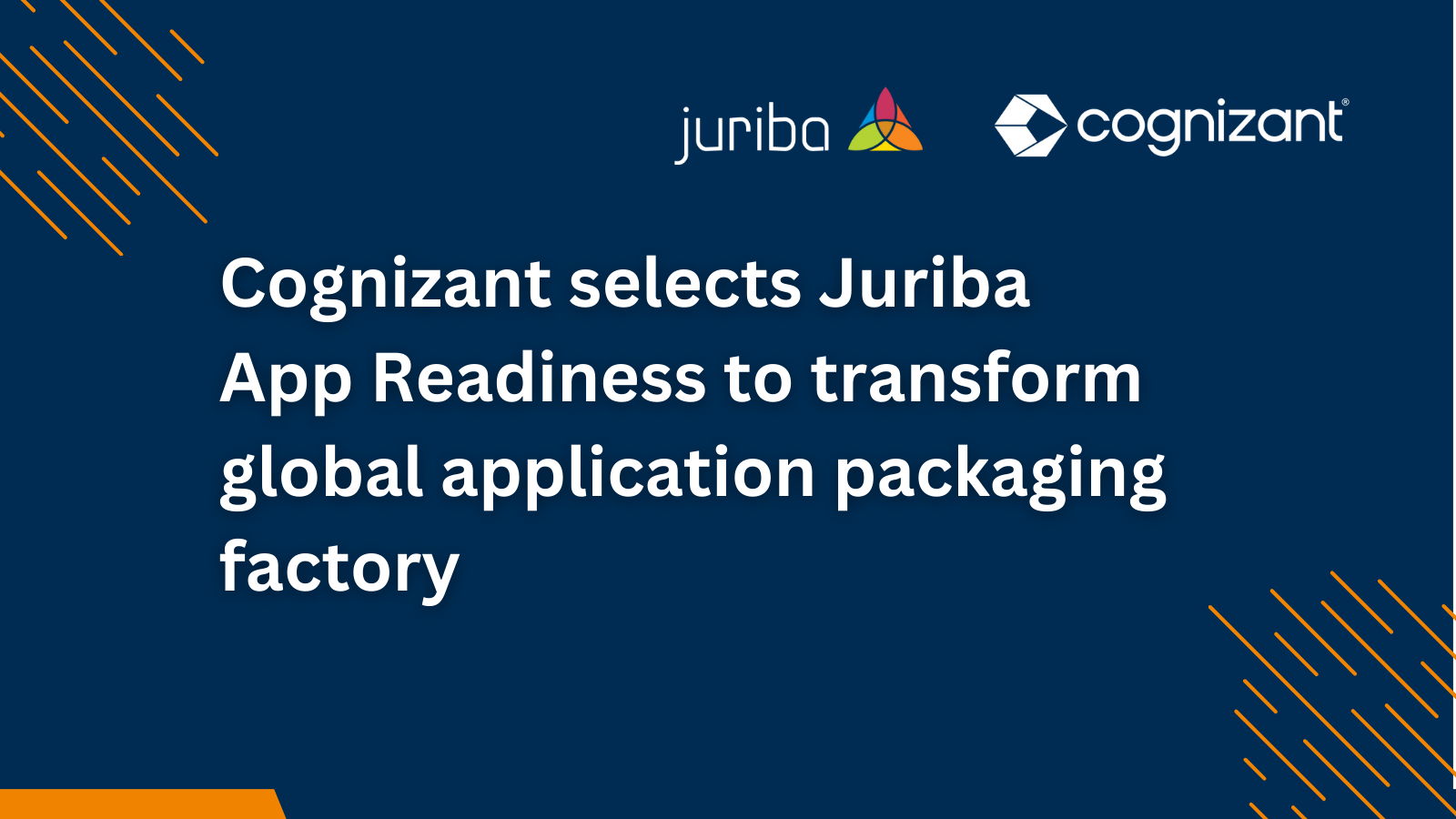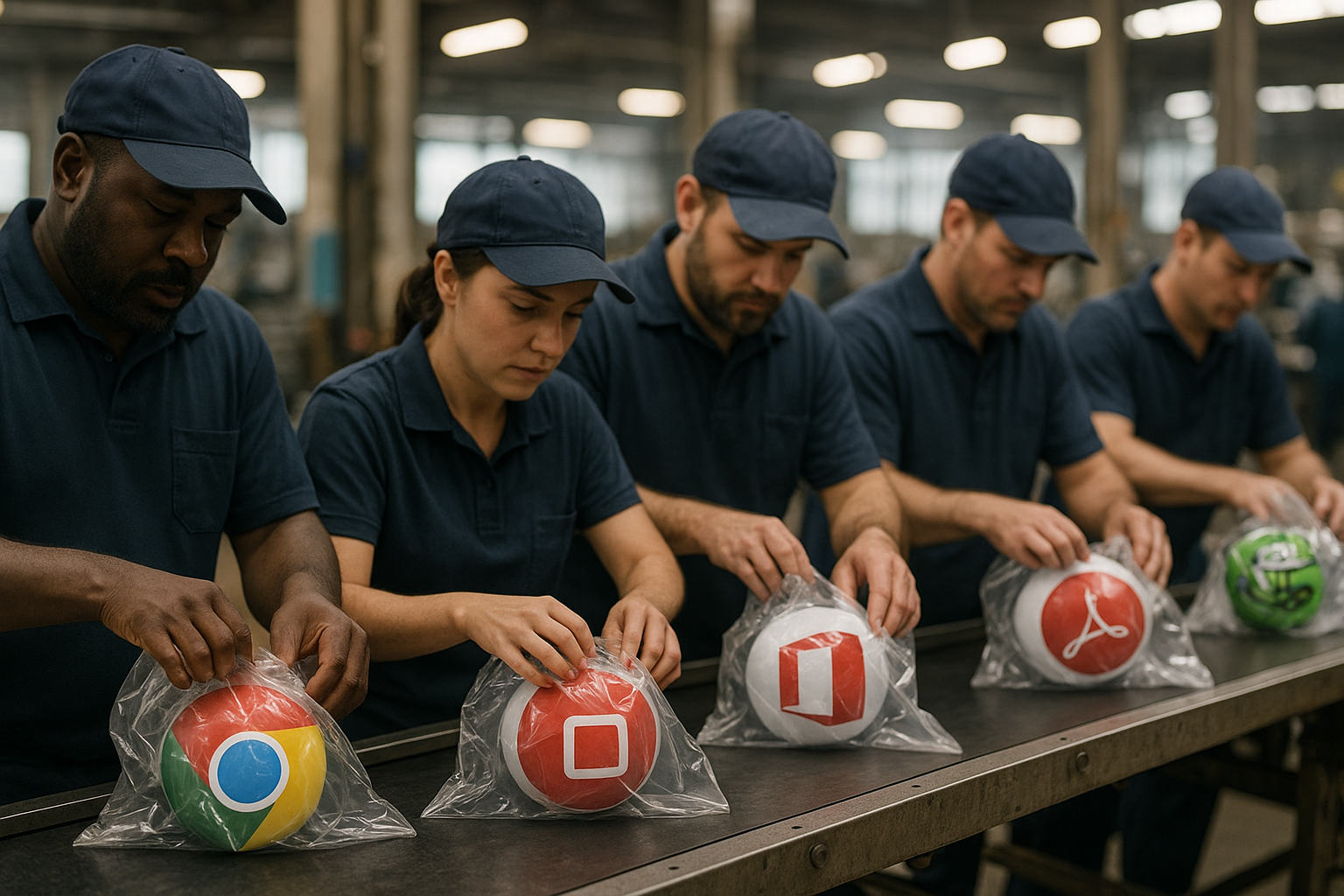Spotlight on Microsoft Intune: A Modern Desktop Reality vs Hype
May 11th, 2022
5 min read
By Julia Bell

Microsoft Intune promises to simplify Modern Workplace management by enabling users to securely work on their device and applications of choice, with a service delivered entirely from the cloud.
Microsoft Intune helps organizations let their people use the devices and applications they love while configuring device settings to meet compliance needs. Microsoft Intune lets you manage your devices from the cloud or while connected to an existing SCCM infrastructure and manage devices in a flexible way that’s best for you.” -- Microsoft 2022
It's a big statement - every organization should be jumping to make a move. But with many businesses still yet to leap and migrate to Microsoft Intune, is this all hype or is the long-term future really Intune?
In the first blog of our Microsoft Intune series, we explored the reasons behind the rise in popularity of the product, and the impact wide scale adoption will have on future device and application management. Now, we turn our attention to reality and explore the different areas Microsoft Intune. A deeper dive into why adoption has been slow to date and review what both the market and users of Microsoft Intune think about this management tool driving the Modern Workplace.
Microsoft Intune: Moving Up In The Market
Each year, key technology players in the Unified Endpoint Management market jostle for position and hope to take the lead in the marketplace. From what we have seen as a business, currently moving up after a significant rise in positioning in the last 12-24 months is Microsoft Intune.
For those organizations still on the path to full cloud migration and modern management, the ability to migrate individual devices from legacy systems to Microsoft Intune when ready is another bonus, cited during customer reviews on peer insight platform, PeerSpot.
While considerable progress has been made on features to compete with, and in some instances improve on Microsoft Endpoint Configuration Manager (MECM, formally known as SCCM), a few red flags remain. Heading this list are the skills and training required for migration to Microsoft Intune, missing Endpoint Management capability, cost, and time of migrating applications to required formats, and potential risk around the identification of devices that should be enrolled and managed.
Watch Video: How To Modernize An Existing Application Package to .intunewin for Microsoft Intune Using Juriba's appM
The Keys To The (Device Management) Castle
Security breaches and cyber-crime are on the rise, meaning keeping corporate data secure has never been more important, something that Microsoft Intune directly addresses and excels at.
Using Microsoft Intune, an organization can ensure that the workforce's corporate resources (data, devices, and apps) are correctly configured, accessed, and updated, meeting your company's compliance policies and security requirements. Microsoft's Enterprise Mobility + Security (EMS) suite integrates with Azure Active Directory (Azure AD) to control who has access and what they can access, and with Azure Information Protection for data protection. As this includes personal devices (BYOD), Microsoft Intune can make sure that organizational data remains secure and protected whilst increasing productivity for the remote workforce by allowing personal devices.
The increase in remote workers and being able to confidently secure data on any device, alongside reducing costs enabled by the cloud, is the reason migrating to Microsoft Intune is now firmly under the spotlight for many organizations.
What Are Juriba's Customers Saying?
With so many compelling reasons to move, and some highly intelligent marketing from Microsoft, it would seem like an easy decision to migrate to Intune as soon as possible. But what is the reality of the marketplace today?
Juriba has numerous customers both directly and that are serviced by Juriba partners amounting to millions of enterprise seats. From our discussions, Intune is a direction of travel that is highly desirable for all the reasons outlined above. However, there is a general reluctance to fund a dedicated project to achieve the migration driven by the following factors:
- MECM already manages the endpoints successfully and can now be hosted in Azure to achieve cloud management experience
- Existing functionality within MECM provides a greater level of granular control on software, patch and OS/O365 feature update deployment
- Many organizational processes utilize MECM to achieve levels of automation
- Skills and expertise exist in the end-to-end administration of devices and applications within the MECM
- Application packaging and testing is often controlled within MECM with well-defined processes
Yet Intune now has features that are not available in MECM, and the desire is to manage all devices, whether desktops/laptops, virtual machines, or mobile devices within a single solution. Therefore, the question on the mind of many endpoint managers is "how can I gain benefit from this modern technology whilst ensuring that the environment is managed in a simplified manner?".
Microsoft's answer to this is to create a hybrid solution, taking the best bits from each technology to provide a total Endpoint mManagement experience. However, hybrid solutions are often fraught with complexity. For example, does the organization continue to run both technologies as a strategy for application distribution? Or when something doesn't work, how easy is it to understand where the error has occurred? Does the organization push for certain apps to be modernized in Intune whilst leaving those unconvertable legacy apps in MECM?
These are just some of the questions that need answering before an organization can realistically build their Intune strategy. Does the outcome provide the additional levels of cost reduction and automation that justify the means? Is Microsoft Intune still primarily a mobile device management solution that has been shoehorned into full device management?
"Managing mobile devices across a corporate workplace is becoming increasingly important. It doesn't matter if the organization is based in a single or multiple locations – device management is a vital operation for IT teams.” -- TechRadar 2021
Word On The Street
It's clear that there are many benefits to using Microsoft Intune, but what do the end-users think about the solution, and how do they rate it in terms of features, ease of use, migration, and actual adoption?
Aligned to market analysis, end-user feedback states that Microsoft Intune product maturity has firmly positioned the solution as offering flexibility and a path to modernization. In addition, quickly securing and managing devices, whether organizational or personal is a benefit that users repeatedly state at all stages of their lifecycle.
Cost also featured highly, with users stating the reduction in costs due to Microsoft Intune being included as part of an existing Microsoft license. This saving had prompted many to move from their existing MDM solution that they were paying for to Microsoft Intune.
"Microsoft Intune stands out among its competitors for a number of reasons. Two major ones are its ability to secure all devices under its management and the flexibility that the solution offers its users.” -- PeerSpot 2022
The Microsoft brand and use of other modern workplace products such as Azure of M365 also made it an easier decision as the migration to Intune was seen as more of an extension, reducing the risk of change.
"It is scalable, and it is fairly portable for customers, particularly for those who are already involved in the Microsoft stack. It is also great for software update needs, operating system version updates, and security policy enforcement.” -- PeerSpot 2022
Users also stated that there are still areas of concern in adopting Microsoft Intune and necessary feature improvements. Reporting is an example of this and configuration for initial deployment, with many stating Microsoft Intune needs to be less complicated and more interactive and streamlined, especially when dealing with a typically complex and legacy IT estate.
Comparisons to other tools, such as AirWatch, have been made regarding a more sophisticated feature set, leading many organizations to opt for a hybrid set-up.
However, despite these reservations, Microsoft Intune was rated as the #1 solution by the people to manage it, with the overall summary of it being stable, scalable, and with knowledgeable technical support.
To Summarize:
It is fair to say that Microsoft Intune is leading the way with this solution ranking #1 with both the market analysts and the people who use it. Moreover, with the acceleration in recent years in remote working and the consequent adoption of modern workplace tools, Microsoft Intune's adoption will continue to gain traction within most organizations.
Currently, various sources estimate Microsoft Intune adoption to be on track to overtake SCCM (or rather MECM), with forecasts predicting that most companies will be using Microsoft Intune shortly. From peer insights, it is estimated that 25% to 30% of companies are already using Microsoft Intune to some extent. The remainder are still using SCCM (MECM) or trying to evolve old solutions — but this will change. Many organizations are on course to use a hybrid Microsoft Intune model or a complete Microsoft Intune model.
However, it must also be noted that a successful migration to Microsoft Intune starts with a plan, requires a level of investment, and needs the right tools and processes in place to achieve the right outcome in the right timeframe. There are several moving parts to adopting modern Device Management and the processes should always be the driver for the decision and not the technology alone.
Whatever the starting point or plan, the hype is substantiated, and Intune is going nowhere.
Stay with us - our next blog in the Microsoft Intune series will dive deeper and share more technical insights on what the product means for modern application packaging and how organizations can best approach the migration.
Julia is co-founder of Juriba where she is Chief Technology Officer. She drives the strategy & roadmap for Juriba's products. Julia is passionate about the power of workplace automation when built on the right data and platform, and has seen first hand how this can transform organizations.

















.png?width=1600&height=900&name=PSAppDeployKit_FeaturedImage%20(1).png)





